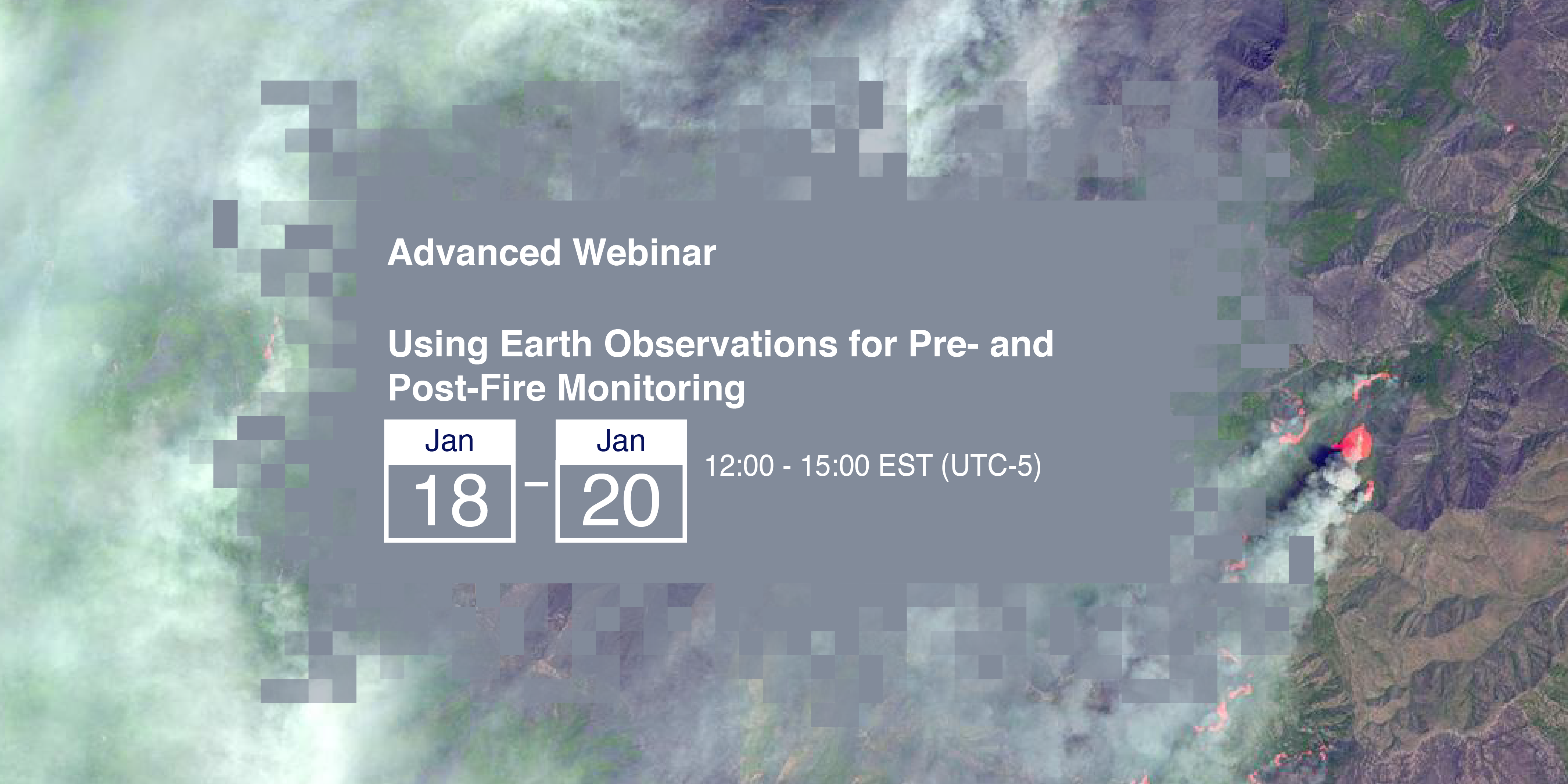Using Earth Observations for Pre- and Post-Fire Monitoring
Record breaking fire seasons, like those we saw in California in 2020, demonstrate how climate change influences the risk and severity of fires on a global scale. Climate change impacts can increase fire frequency, disrupt historical fire regimes, and contribute to increases in fire intensity and burn severity. Therefore, assessments of fire risk and post-fire mapping and monitoring are vital for effective management and decision-making. This training will consist of two sessions with hands-on-exercises and “lab time,” where participants will complete exercises with instructors online to answer questions as they come up. During the first session, we will review pre-fire risk assessment by investigating land surface variables (e.g., vegetation type and height, fuel regimes, fuel moisture, and topography) and climate variables (e.g., temperature and precipitation). In the second session, we will conduct post-fire mapping of burned area and burn severity using vegetation indices such as the Normalized Burn Ratio (NBR). Methods will include the use of open-source tools, such as Google Earth Engine and NASA-supported platforms such as the SERVIR Global Service Catalog for analyzing imagery.
Relevant UN Sustainable Development Goals:
- Target 13.1: Strengthen resilience and adaptive capacity to climate-related hazards and natural disasters in all countries
Course Dates: January 18 and January 20, 2022
Time: 12:00-15:00 EST (UTC-5)
Learning Objectives: By the end of the training attendees will be able to:
- Identify land cover and climate variables related to wildfire risk
- Access and display geospatial wildfire risk data layers
- Create a burn severity map using satellite imagery
- Calculate burned area using satellite imagery
Audience: Local, regional, state, federal, and non-governmental organizations involved in land management, fire risk assessment, and post-fire landscape evaluation. Applied scientists and GIS professionals interested in learning how to complete fire-related assessments independently.
Course Format: Two, 3-hour parts with hands-on-exercises and “lab time”.

